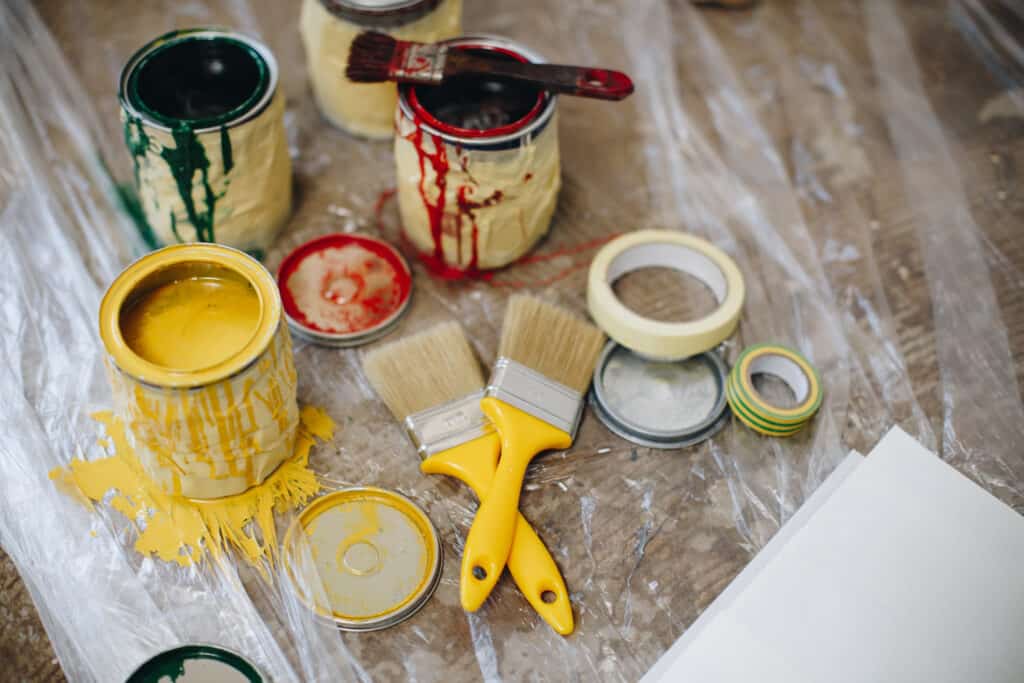Fear of making costly mistakes or ending up with disappointing results can often mean home decorating jobs are left on the to-do list.
But according to Rex Nye, MD of online building supplies business DW Nye, here are some of the ways you can avoid common mistakes and have a finished project to be proud of.
Prepare your surfaces: Enthusiasm to get on with the job can easily lead to corners being cut, but making sure you prepare walls for painting or wallpapering is vital for ensuring a smooth finish. Dust surfaces thoroughly first, then rub down walls using diluted sugar soap and a sponge. Sugar soap can irritate the skin so be sure to wear rubber gloves. Then use a clean sponge and water to wipe surfaces clean. Fill in cracks with decorating caulk. This is perfect for use around skirting boards, ceilings, window frames and architraves.
Choose the right colour: When it comes to wall colour, don’t play it too safe as neutral colours will leave your home lacking in character. If you have a small room, don’t assume white will make it look bigger. White works best in spaces where there’s plenty of natural light; a dim space will make white walls look dull. A cosy colour can often work better in a small room. Can’t decide which colour to go for? Choose a colour from a favoured patterned fabric or item of furniture and use it to create a colour palette for your walls. Always test the colour before painting a whole wall, and see how it looks in both natural and artificial light before taking the plunge.
Look after yourself: Around 200,000 DIYers find themselves in hospital every year due to decorating mishaps, including 41,000 who are injured using a stepladder. Make sure your ladder is in good working order and avoid falls by using non-slip footwear. Heavy-duty gloves will help guard against cuts, splinters and harsh chemicals.
Don’t position artwork too high: Many people place carefully-chosen artwork too high to appreciate it. Pictures should be positioned at eye level when standing. As a general rule, make sure the picture’s midpoint is around 60 inches from the floor. If it’s behind a sofa, position it six inches above the top. Make sure you use the correct fittings to hang heavy frames. Hard masonry walls will require a power drill, such as DeWalt Combi Drill, wall plugs and a sturdy hook or screw to support the frame. Cavity walls can conceal cables and wiring so be careful where you hang the picture. Plasterboard is very soft and needs to be handled carefully so you aren’t left with holes and crumbling plaster. Use a plasterboard hook or spring toggle rather than ordinary wall plugs.
Relegate the TV: Making the TV the focal point of the room is a very common mistake – unless you really want the TV to be the first thing everyone notices when they enter the room. Instead, make the focal point a table where friends and family can gather or a cosy fireplace. If space is limited and you can’t move the TV, create a focal point nearby, such as a group of photos or a painting. Or you could paint the wall behind the TV a dark colour. TVs always look better mounted on the wall. Make sure you place it slightly higher than eye level when you’re seated. Unsightly electric cables can ruin the style of a room. Hide them behind a baseboard, or use cable covers.
Too many accessories: It’s tempting to get carried away when you’re re-decorating, but make sure you don’t go too mad on accessories or the space will look cluttered and your good work won’t have a chance to shine. Don’t buy too many cushions and throws for sofas and chairs and remember that open shelves shouldn’t be used as storage, but to display select items. If you’re using your shelves as storage, make sure you install doors to conceal the mess.

